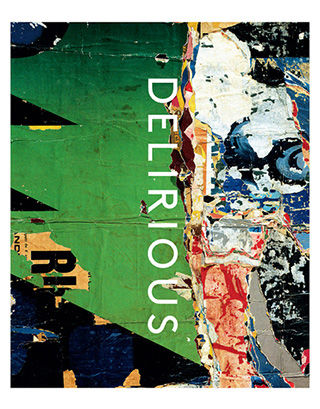Guilherme Ferreira e toda a equipe da CitizenGO
|
Assine a campanha para enviar um e-mail ao governo brasileiro e à Comissão Europeia e pedir que eliminem do texto do acordo as referências à ideologia de gênero
|
Estão em curso negociações para um acordo comercial entre a União Europeia e o Mercosul (Brasil, Argentina, Paraguai e Uruguai).
A CitizenGO teve acesso ao texto - um documento confidencial - e identificou que o acordo inclui uma cláusula que visa “fomentar a transversalidade efetiva do gênero”, ou seja, a União Europeia só aceitará o tratado se os países do Mercosul se comprometerem a promover a ideologia de gênero. Isso é o que significa a expressão “transversalidade efetiva de gênero”.
Querem fazer isso sem nenhuma base legal, de forma silenciosa, sem que a população saiba do que estão tentando impor.
Assine a petição para enviar um e-mail à Comissão Europeia e ao governo brasileiro e dizer a eles que os brasileiros não aceitarão essa imposição ideológica:
SULA, por favor, compartilhe esta petição com o maior número possível de pessoas.
Mais uma vez, muito obrigado pelo apoio.
Guilherme Ferreira e toda a equipe da CitizenGO
PS: A pressão exercida sobre os parlamentares a respeito do abortoduto foi bem-sucedida. O projeto ainda não foi votado!
|
JOSÉ LEONILSON PRESENTS EMPTY MAN AT NYC
On view: September 27–February 3, 2018
Curated by Cecilia Brunson, Gabriela Rangel, and Susanna V. Temkin
José Leonilson (1957-1993) came of age as an artist during the 80s generation in Brazil. What he shared with this diverse artistic milieu was the so-called ‘joy of painting,’ rediscovered in the years following the end of Brazil’s dictatorship. What separated him from his contemporaries was his personal way of working and his distinct aesthetic centered on raw emotional feelings, introspective musings, and private affairs.
This Fall, Americas Society will present José Leonilson: Empty Man, the first U.S. solo exhibition of this key Brazilian artist. Focusing on Leonilson’s production as a mature artist, the show will feature approximately fifty paintings, drawings, and intimate embroideries made between the mid-1980s until 1993, when the artist died of AIDS. This short yet prolific period showcases the artist’s fully developed language, connecting Leonilson’s oeuvre with contemporary art practices, Brazilian vernacular traditions, and global issues prompted by the AIDS crisis. By taking as its starting point the works produced during the last three years of his life and moving backwards into the 1980s, the exhibition maps Leonilson’s artistic journey following the reverse chronology of T.S. Eliot: “in the beginning is my end. In my end is my beginning.”
Edited by Karen Marta and Gabriela Rangel, a fully illustrated publication with newly commissioned texts is being produced in conjunction with the exhibition. The book, designed by Garrick Gott, will feature essays by the show’s curators, as well as texts by invited scholars Jenni Sorkin (University of California at Santa Barbara), Luis Enrique Pérez Oramas (writer and art historian), and Yuji Kawasima (Universidad Complutense in Madrid).
About the Artist
Born in Fortaleza in 1957, Leonilson studied at the Escola Pan-Americana de Arte and the Fundação Armando Alvares Penteado (FAAP) in São Paulo. A participant in the generation defining exhibition, Como vai você, Geração 80? (How Are You, Generation 80?), he emerged as a seminal figure of the Brazilian contemporary art world during this decade. Over the course of his career Leonilson traveled extensively throughout Europe, and his paintings, drawings, and installations were featured in solo and group shows in France, Germany, Italy, and Spain, in addition to many exhibitions held in Brazil. In 1991, the artist tested positive for HIV. This diagnosis compelled a decisive shift in his career, as Leonilson began to develop his intimate embroideries, a practice he continued until his death in 1993 at the age of 36. Artworks by Leonilson are today included in such major public and private collections as the Centre National d’Art et de Culture Georges-Pompidou; the Colección Patricia Phelps de Cisneros; the Los Angeles County Museum of Art; the Museo de Arte Contemporáneo de Barcelona; the Museu de Arte Moderna de São Paulo; The Museum of Modern Art, New York; Tate Modern, London; The Museum of Fine Arts, Houston, among others.
EXHIBITION OVERVIEW - https://www.metmuseum.org/exhibitions/listings/2017/delirious
 Exhibition Catalogue
Richly illustrated, this provocative book invites readers to "think crazy" about the postwar work of more than 60 international artists.
Buy NowExhibition Overview
Delirious times demand delirious art, or so this exhibition proposes. The years between 1950 and 1980 were beset by upheaval. Around the globe, military conflict proliferated and social and political unrest flared. Disenchantment with an oppressive rationalism mounted, as did a corollary interest in fantastic, hallucinatory experiences. Artists responded to these developments by incorporating absurdity, disorder, nonsense, disorientation, and repetition into their work. In the process, they destabilize space and perception, give form to extreme mental, emotional, and physical states, and derange otherwise logical structures and techniques. Delirious explores the embrace of irrationality among American, Latin American, and European artists.
Divided into four sections—Vertigo, Excess, Nonsense, and Twisted—this exhibition showcases roughly 100 works of art by 62 artists, including Antonio Berni, Dara Birnbaum, Tony Conrad, Hanne Darboven, Dean Fleming, Nancy Grossman, Philip Guston, Eva Hesse, Alfred Jensen, Yayoi Kusama, Sol LeWitt, Darcílio Lima, Lee Lozano, Anna Maria Maiolino, Ana Mendieta, Bruce Nauman, Jim Nutt, Hélio Oiticica, Claes Oldenburg, Abraham Palatnik, Howardena Pindell, Peter Saul, Mira Schendel, Carolee Schneemann, Paul Sharits, Robert Smithson, Nancy Spero, Paul Thek, and Stan VanDerBeek. About a third of the exhibition is drawn from The Met collection. Linked by a common distrust of reason, the featured works alternately simulate and stimulate delirium, straining the limits of both legibility and intelligibility. Ultimately, the exhibition asks if it is possible to understand a good deal of postwar art, even seemingly rational art, as an exercise in calculated lunacy.
|







No comments:
Post a Comment